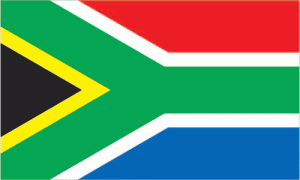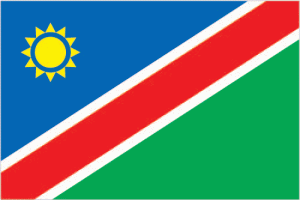Countries in Southern Africa and Their Capitals
How Many Nations in Southern Africa
Located in south part of Africa, Southern Africa is composed of 5 countries. Here is an alphabetical list of all countries in South Africa: Botswana, Lesotho, Namibia, Swaziland, and South Africa.
1. South Africa
South Africa, formally the Republic of South Africa, is a republic in Africa, the southernmost part of the African continent.
 |
|
2. Botswana
Botswana is a republic in southern Africa. The state has no coast and the country borders in the east to Zimbabwe, in the southwest and south to South Africa, in the west and in the north to Namibia. Before the independence from Great Britain, the country was very poor but today has a high growth rate and is a very peaceful country for the region.
 |
|
3. Lesotho
Lesotho, formally the Kingdom of Lesotho, is a monarchy in southern Africa, an enclave to, and thus on all sides surrounded by, South Africa and one of the smallest countries in Africa.
 |
|
4. Namibia
Namibia, formally the Republic of Namibia, is a state in southwestern Africa on the Atlantic Ocean. The country borders Angola, Botswana, South Africa and Zambia. Along the coast are the Namib Desert and to the east the Kalahari Desert.
 |
|
5. Swaziland
Swaziland, formally the Kingdom of Swaziland, is an absolute monarchy located in southern Africa. It is the region’s smallest state, lacks a coast and borders Mozambique in the east and South Africa in the north, west and south.
 |
|
Countries in Southern Africa by Population and Their Capitals
As noted above, there are five independent countries in the Southern Africa. Among them, the largest country is South Africa and the smallest one is Swaziland in term of population. The full list of Southern African countries with capitals is shown in the table below, ranked by latest total population.
| # | Country | Population | Land Area (km²) | Capital |
| 1 | South Africa | 57,725,600 | 1,214,470 | Pretoria, Cape Town, Bloemfontein |
| 2 | Namibia | 2,458,936 | 823,290 | Windhoek |
| 3 | Botswana | 2,338,851 | 566,730 | Gaborone |
| 4 | Lesotho | 2,007,201 | 30,355 | Maseru |
| 5 | Swaziland | 1,367,254 | 6704 | Mbabane |
Map of South African Countries

Brief History of Southern Africa
Early Human History
Prehistoric Period
Southern Africa boasts one of the longest continuous histories of human habitation on the planet. The region is home to some of the oldest evidence of human life, with archaeological findings in places like the Cradle of Humankind in South Africa and the Border Cave in Eswatini dating back millions of years. Early human ancestors, including Australopithecus and Homo erectus, roamed these lands, leaving behind fossils and stone tools.
San and Khoikhoi Peoples
The San (Bushmen) and Khoikhoi (Hottentots) are among the earliest known inhabitants of Southern Africa. The San were primarily hunter-gatherers, utilizing their deep knowledge of the land to survive in harsh environments. The Khoikhoi, who arrived later, practiced pastoralism, raising livestock and establishing more permanent settlements. These groups had a profound understanding of their environment and maintained rich oral traditions that encapsulated their histories, beliefs, and knowledge.
Rise of African Kingdoms
Mapungubwe
One of the earliest complex societies in Southern Africa was the Kingdom of Mapungubwe, which flourished between the 11th and 13th centuries. Located in present-day South Africa, near the borders of Zimbabwe and Botswana, Mapungubwe was a significant trading center, dealing in gold, ivory, and other goods with traders from as far away as China and India. The kingdom’s decline paved the way for the rise of Great Zimbabwe.
Great Zimbabwe
The Kingdom of Great Zimbabwe emerged around the 11th century and became the most significant and influential state in Southern Africa by the 14th century. Known for its impressive stone structures, including the Great Enclosure and the Hill Complex, Great Zimbabwe was a hub of trade and culture. The kingdom’s economy was based on agriculture, cattle herding, and extensive trade networks that reached the Swahili Coast and beyond. Great Zimbabwe’s influence waned in the 15th century, likely due to environmental changes and overexploitation of resources.
European Exploration and Colonization
Portuguese Influence
The arrival of Europeans in Southern Africa began with the Portuguese in the late 15th century. Bartolomeu Dias rounded the Cape of Good Hope in 1488, and Vasco da Gama reached the Indian Ocean via the southern tip of Africa in 1497. The Portuguese established trading posts and forts along the coast, seeking to control the lucrative spice trade routes to India and the East Indies.
Dutch Colonization
In 1652, the Dutch East India Company established a refreshment station at the Cape of Good Hope, laying the foundation for Cape Town. This settlement grew into a colony as Dutch farmers, known as Boers, moved inland to establish farms and ranches. The expansion led to conflicts with the indigenous Khoikhoi and San peoples and later with Bantu-speaking groups migrating southward.
British Colonization and Expansion
The British Takeover
The British seized the Cape Colony from the Dutch during the Napoleonic Wars in 1806. Under British rule, the colony expanded significantly, and waves of British settlers arrived. The British introduced new policies, including the abolition of slavery in 1834, which caused tension with the Boers. This friction culminated in the Great Trek of the 1830s and 1840s, during which Boer Voortrekkers migrated inland to establish independent republics like the Orange Free State and the Transvaal.
Discovery of Diamonds and Gold
The discovery of diamonds in Kimberley in 1867 and gold on the Witwatersrand in 1886 transformed Southern Africa. These mineral finds attracted a flood of immigrants and investment, fueling rapid economic growth and the development of modern infrastructure. However, the competition for control of these resources intensified conflicts between the British and the Boers, as well as with indigenous African groups.
The Anglo-Zulu and Anglo-Boer Wars
Anglo-Zulu War
The Anglo-Zulu War of 1879 was a conflict between the British Empire and the Zulu Kingdom. The British sought to expand their control over Southern Africa, while the Zulus, under King Cetshwayo, resisted. Despite initial Zulu victories, including the famous Battle of Isandlwana, the British eventually defeated the Zulus, leading to the kingdom’s incorporation into the British Empire.
Anglo-Boer Wars
The tensions between the British and the Boers culminated in two significant conflicts: the First Anglo-Boer War (1880-1881) and the Second Anglo-Boer War (1899-1902). The First War ended in a Boer victory, securing the independence of the Transvaal and Orange Free State. However, the Second War, triggered by disputes over the control of gold mines and political rights, resulted in a British victory. The Treaty of Vereeniging in 1902 ended the war, and the Boer republics were incorporated into the British Empire.
Apartheid and Modern Era
Establishment of Apartheid
In 1948, the National Party came to power in South Africa and implemented the policy of apartheid, a system of institutionalized racial segregation and discrimination. Apartheid laws separated people based on race, restricting non-white South Africans’ rights and freedoms. The apartheid regime faced significant internal resistance and international condemnation.
Struggle for Liberation
The struggle against apartheid was led by various political and social movements, most notably the African National Congress (ANC) and its leader, Nelson Mandela. The 1960 Sharpeville Massacre and the 1976 Soweto Uprising were pivotal events that galvanized opposition to apartheid. International pressure, economic sanctions, and internal unrest eventually forced the South African government to negotiate an end to apartheid.
Transition to Democracy
In 1990, President F.W. de Klerk announced the lifting of the ban on the ANC and the release of Nelson Mandela from prison. Negotiations between the government and anti-apartheid groups led to the first democratic elections in 1994, in which Mandela was elected as South Africa’s first black president. The transition to democracy marked a new era for Southern Africa, with efforts to address the legacies of apartheid and promote reconciliation and development.
Contemporary Southern Africa
Economic and Social Challenges
Southern Africa today faces numerous challenges, including economic inequality, political instability, and health crises such as HIV/AIDS. Countries in the region are working to diversify their economies, improve governance, and address social issues. South Africa, the region’s largest economy, plays a crucial role in regional politics and development.
Regional Cooperation
The Southern African Development Community (SADC), established in 1992, aims to promote regional integration and economic cooperation among member states. SADC initiatives focus on infrastructure development, trade, and conflict resolution, contributing to the region’s stability and growth.













































